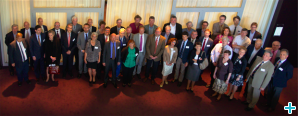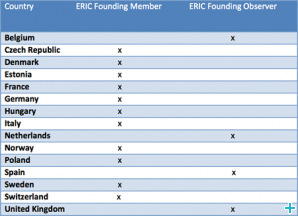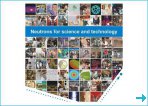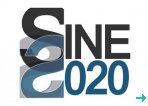European Commission Establishes ESS as a European Research Infrastructure Consortium
The EC in Brussels formally adopted its decision to establish the European Spallation Source as a European Research Infrastructure Consortium, or ERIC.
Press release from ESS. 26/08/2015

Attendees of the July 2-3 constituting ERIC Council meeting in Lund. Click here to see a larger photo. © ESS
The European Commission's (EC) decision to establish the European Spallation Source ERIC will enter into force 28 August.
“The European Commission’s approval of ESS as an ERIC is a major milestone for the project,” says Jim Yeck, ESS Director General. “This decision establishes ESS as an international organisation with legal standing in all the Member Countries, and provides the framework for completing the project in collaboration with our partners in those countries.”
Priority for Europe
The European Spallation Source is the world’s next-generation neutron source currently under construction in Lund, Sweden. It is the largest project and one of the top priorities of the EC’s European Strategy Forum on Research Infrastructures (ESFRI) Roadmap, which was established over a decade ago to prioritise research infrastructure development in Europe. The EU has contributed €5 million of funding to the project’s Pre-Construction Phase, with additional support of €20 million in 2015 through Horizon 2020.
ESS will use a high-power linear proton accelerator to create neutron beams to probe the structures and dynamics of materials—everything from motors for industry, to emerging discoveries in nanotechnology and superconductors, to proteins and pharmaceuticals for medical applications. The facility will be a major driver for innovation in science and industry in Europe.
New Governance Structure
The EC’s decision to establish ESS as an ERIC heralds a new governance structure for ESS and its Partners that will include Founding and Observer Member Countries who are empowered to both govern and fund the project directly.
European Spallation Source ERIC Founding Members are the Czech Republic, Denmark, Estonia, France, Germany, Hungary, Italy, Norway, Poland, Sweden and Switzerland. European Spallation Source ERIC Observers, who plan to become Members in the near future, are Belgium, the Netherlands, Spain and the United Kingdom.
Originally established as a Swedish limited liability corporation owned by the Swedish and Danish governments, ESS AB will complete a transfer of assets, obligations and personnel to European Spallation Source ERIC on 1 October. Following that, the European Spallation Source ERIC Council, comprised of representatives from ESS Member Countries and will act as the sole governing body.
The European Spallation Source ERIC Council named Jim Yeck as Director General of European Spallation Source ERIC, and Prof. Lars Börjesson as Chair of the Council.
Looking Ahead
“The Host Countries Sweden and Denmark shepherded the large pan-European efforts of ESS first into construction a year ago and now into the ERIC organisation co-owned by a large set of European countries. They should be commended for their leadership,” says Prof. Börjesson. “Now we look ahead to future leadership by a fully committed group of ESS Member Countries who will bring ESS into operation over the next decade.”
The successful establishment of European Spallation Source ERIC will be celebrated at a ceremony in Lund on 8 September, where the EC’s Director-General for Research and Innovation, Robert-Jan Smits, will present a commemorative ERIC Plate to ESS. The ESS Council will next meet at the ESS construction site in mid-October.
The ESS is a member of the NMI3 Consortium.
Source: ESS
Latest news
Magnets made of non-magnetic metals
Muons were essential to show how non-magnetic metals become magnetic. The experiments at PSI received NMI3 funding. Read more.
New ENSA Brochure on “Neutrons for science and technology”
The brochure highlights the importance of neutron scattering, illustrated by several examples. Get a free copy at the NMI3 stand at ECNS! Read more.
SINE2020 Grant Agreement signed by the European Commission
The Grant Agreement for SINE2020 has now been signed by the European Commission. The project will start this year on October 1 and will last four years. Read more.




